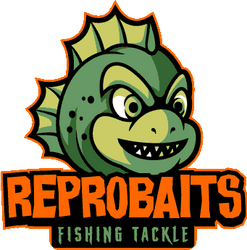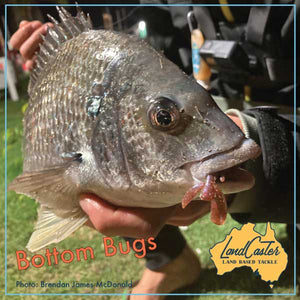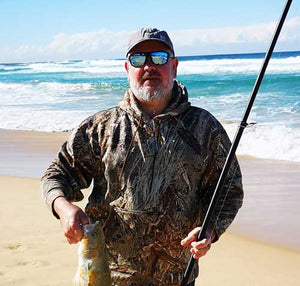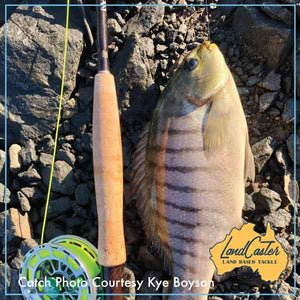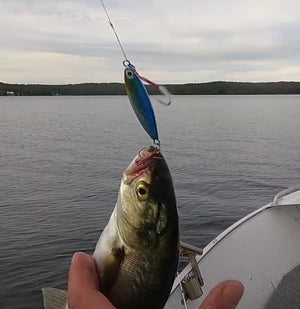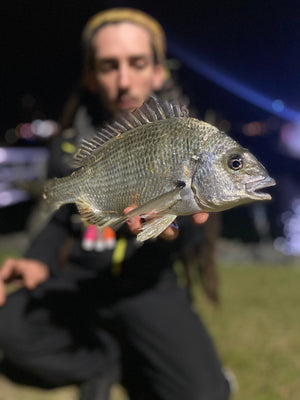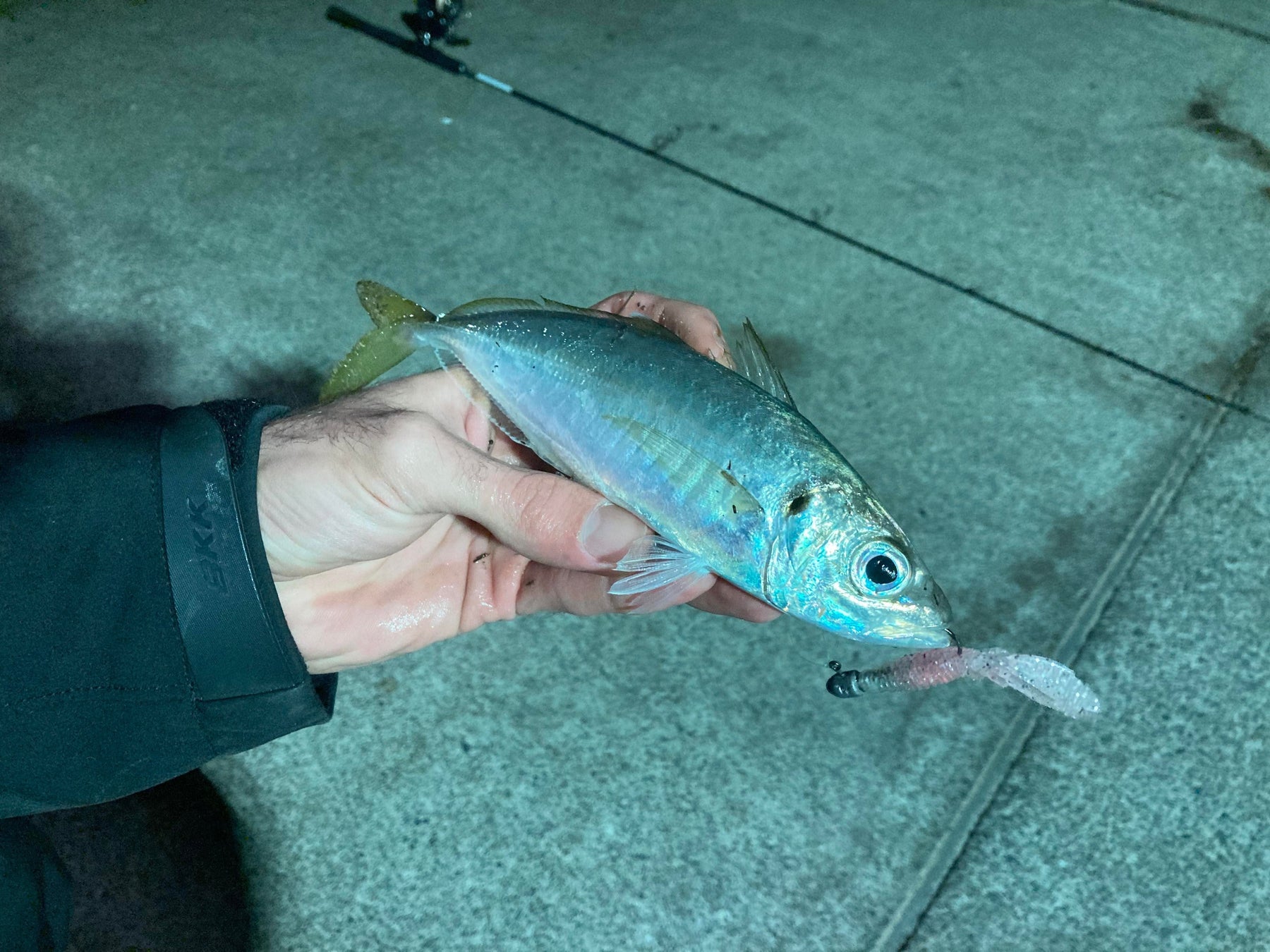
Shore Fishing for Yakkas – Easy Tips and Bait for Yellowtail Scad
The Ultimate Guide to Catching Yakkas (Yellowtail Scad) from Shore in Australia
If you're looking to catch yakkas (yellowtail scad) from the shore along Australia’s east coast you’re in the right place! Yakkas are plentiful, easy to catch, and perfect for both live bait and eating. Whether you’re a beginner or a seasoned angler, learning the best rigs, bait, and techniques will help you land more fish.
This isn’t just about catching your own bait. With the right tackle, rigs, and timing, yakka fishing becomes an art — especially from shore. Whether you’re collecting live bait for an epic kingfish mission or putting together a feed this guide will walk you through where to find them, what gear to use, how to rig up, and even how to cook them.
🔥 In this guide, we’ll cover:
✅ Where to find yakkas & how to catch them
✅ The best rigs, baits & lures for yakka fishing
✅ How to use yakkas as live bait for bigger fish
✅ Cooking tips – Yes, yakkas are delicious!
🎣 Let’s get started! 🚀
🐟 What Are Yakkas? Understanding the Yellowtail Scad
Yakkas, or yellowtail scad, are small, fast-swimming fish found in schools along Australia’s eastern coastline. They are a favorite target for many shore-based anglers due to their abundance, aggressive feeding habits, and value as both live bait and table fish.
🔍 How to Identify Yakkas
✔ Silver body with a distinctive yellow stripe
✔ Forked tail for fast swimming
✔ Small mouth—best suited for small hooks & lures
✔ Typically 10-20 cm, but some grow over 30 cm
📍 Where to Find Yakkas in Australia
Often they can be caught right at the ledge when rockfishing. They are at most easy to access public fishing spots too, like piers, jetties, docks, and quays.
Yakkas school in large numbers along the east coast from Queensland to Victoria. They prefer structure-rich environments and can be found:
🐟 Rocky Reefs – Great for catching yakkas near submerged structures.
🎣 Piers & Jetties – Some of the best shore fishing spots for yakka fishing!
🌊 Harbours & Estuaries – Yakkas feed near the surface making them easy to spot.
💡 Pro Tip: The best time to catch yakkas is early morning and late afternoon when they are actively feeding near structure. Burley up some with bread and they'll flock in. Use a small hook and light weight or ajing lures to catch them.
🎣 Best Fishing Gear for Catching Yakkas
Yakkas may be small but using the right gear makes a huge difference in how many you catch!
🎯 Rod & Reel Setup
✅ Rod: 7-foot, light-to-medium action (💡 Try the Bream Reaper Travel Rod for easy transport!)
✅ Reel: 2500-3000 size spinning reel
✅ Line: 6-8 lb fluorocarbon (yakkas tend to be line-shy!)
🐠 Best Bait for Yakkas
✔ Bread on a small ReproBaits size 8-10 Estuary hook under a float
✔ Prawns & small fish pieces (can also attract other species)
✔ Canned tuna & bread burley mix (creates an irresistible scent trail!)
✅ Best Lures for Yakkas
✔ Small metal jigs – Lightweight & flashy 5 to 7 gram to mimic baitfish
✔ Soft plastics – ReproBaits Bullet Prawn works well when retrieved slowly
✔ Sabiki rigs – Multiple small hooks that look like a little school of tiny fish
💡 Did you know? In Japan, yellowtail scad are known as “aji” and are the prime target of an entire fishing discipline known as ajing—a finesse style light-tackle pursuit comparable to fly fishing in its cult-like popularity.
🎣 Best Fishing Techniques for Catching Yakkas from Shore
1️⃣ Float Fishing for Yakkas
One of the easiest and most effective ways to catch yakkas is float fishing. Just attach a small hook with bait and let it drift naturally. Use as little weight as you can several cm above the hook. Adjust depth to find where they are feeding.
✅ Why It Works: Yakkas feed near the surface and a float keeps your bait at the perfect depth. It also lets them pick around before taking the bait fully.
🔥 Recommended Gear: 🛒 ReproBaits Float Kit & Luderick Hooks
2️⃣ Using Sabiki Rigs for Yakkas
A Sabiki rig is one of the fastest ways to catch multiple yakkas at once. These rigs have several small hooks tipped with beads or feathers to imitate tiny baitfish. Simply tie on a sabiki and put a weight at the end. Toss it out and bounce it back.
🛠 How to Use a Sabiki Rig:
✔ Cast near piers, jetties, or reef edges
✔ Let it sink, then jig it gently
✔ Keep it in the strike zone for multiple bites
🛒 Need a Sabiki Rig? Check out our ReproBaits Tackle range!
3️⃣ Burleying for Yakkas
Creating a burley trail attracts yakkas to your spot and keeps them biting longer. Soak bread in a bucket of water until it is basically disintegrated. You don't want to feed them. You want to draw them in closer. Burleying works for other fish species too. Canned cat food, dry dog food, bread, and minced fish and meat works well.
🔥 Best Yakka Burley Recipe:
✔ Bread soaked in seawater
✔ Canned tuna or tuna oil (for an irresistible scent!)
✔ Throw small handfuls into the water every few minutes
🚨 Pro Tip: Don’t throw out big chunks—you want to attract fish, not feed them! Seagulls will also take your big bits of burley.
🐟 How to Use Yakkas as Live Bait for Bigger Fish
Yakkas are one of the best live baits for targeting kingfish, mulloway, snapper, and more. The lively yakka will draw in Kingfish and other predatory fish as it swims about. Using a float is a great way to keep yakka up in the water column. Heaps of fish will take the yakka presented this way. Salmon, tailor, kingfish, snapper, and more.
✅ How to Keep Yakkas Alive
✔ Use a bucket with an aerator or change water frequently.
✔ Handle them gently—stressed baitfish won’t swim naturally.
✔ Keep small quantities in the bucket—too many they will die quickly.
✅ Best Hook Placement for Live Bait
✔ Through the back (behind the dorsal fin for free-swimming action!)
✔ Through the nose/lips (for stability in strong currents!)
✅ Casting Trigger and Distance Casting Tools
✔ Try a casting trigger (for extra casting distance with the heavier bait!)
✔ Sinker Slides (for free-swimming bait action!)
✔ Bait Impact Shield (for longer cast and less windmilling!)
💡 Pro Tip: When targeting big kingfish, use a stinger hook setup to increase hook-up rates. A two hook snell rig works well for live bait also.
🍽️ Can You Eat Yakkas? Absolutely!
While most anglers use yakkas as bait, they’re actually delicious! Yakkas have firm, white flesh, perfect for:
🍽️ Pan-Frying – With garlic, butter & lemon juice
🌮 Fish Tacos – Shredded & seasoned for a fresh twist
🥘 Fish Cakes – Minced with herbs & breadcrumbs OUR RECIPE HERE
🍽️ Japanese Panko – Flour, egg dip, and panko! Tasty as!
🚀 Cleaning Tip: Fillet them whole, then skin them in one quick motion for fast prep! Easy as!
🔥 Catch More Yakkas Today!
Catching yakkas is fun, easy, and rewarding—whether for live bait, cut bait, or a fresh seafood meal. With the right gear, bait, and techniques, you’ll be filling your bucket in no time! Use our Estuary Hooks and you are set for success.
🎣 Shop the Best Yakka Fishing Gear 🎣
🛒 Check out our premium hooks, floats & sabiki rigs for the ultimate yakka fishing experience!
👉 Shop Now
❓ FAQs About Catching Yakkas
🧐 What’s the Best Time to Catch Yakkas?
Early morning & late afternoon when they are most active.
🎣 What’s the Best Bait for Yakkas?
Bread, prawns, small fish pieces, or a tuna/bread burley mix.
🐟 Can Yakkas Be Used as Live Bait?
Yes! They’re excellent for kingfish, snapper, & other predatory species.
🍽️ Are Yakkas Good to Eat?
Absolutely! They’re great pan-fried, in fish cakes, or as tacos.
Yakka are called Aji in Japanese and fishing for horse mackerel as they are called in Japan is called Ajing.
